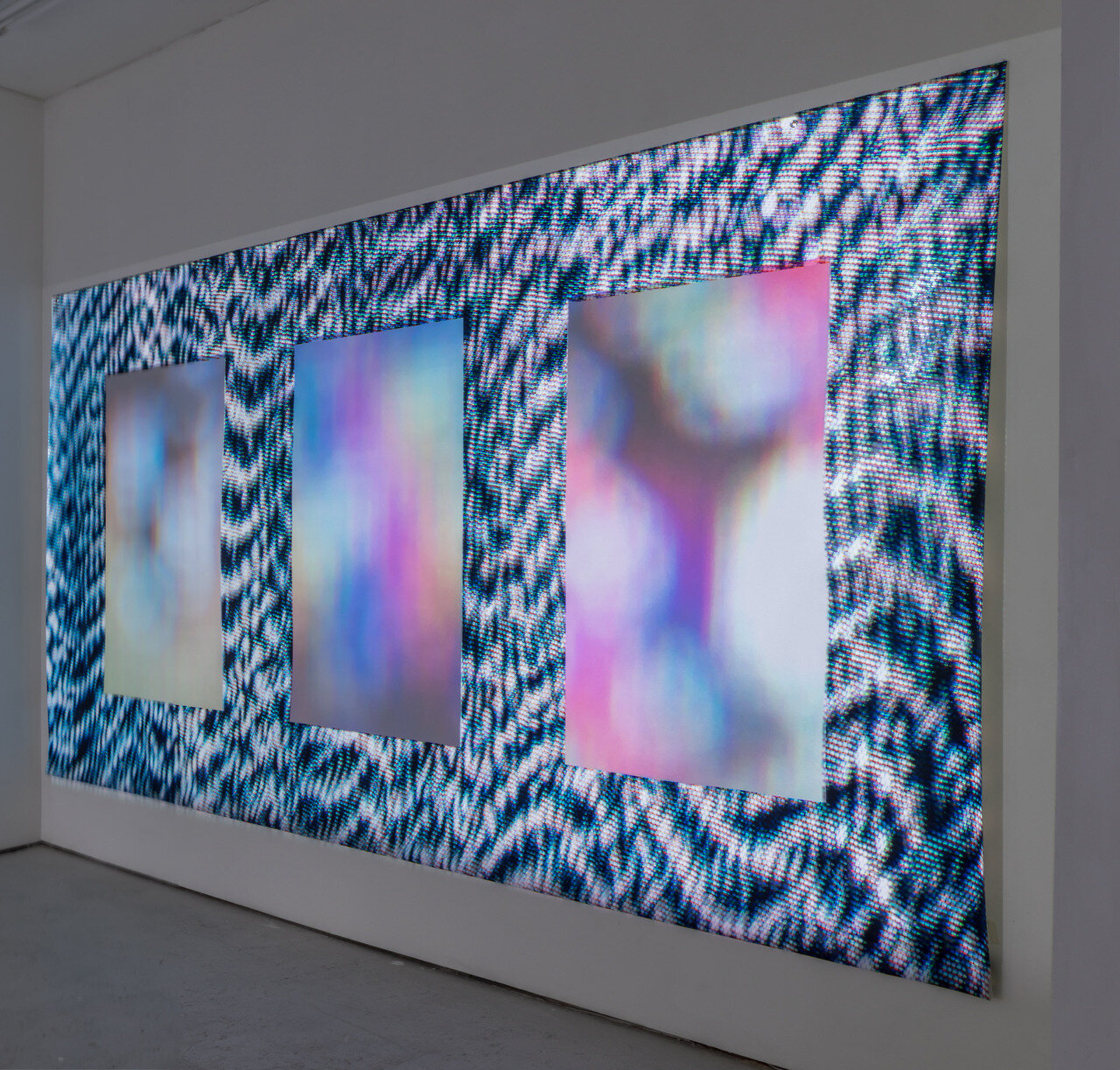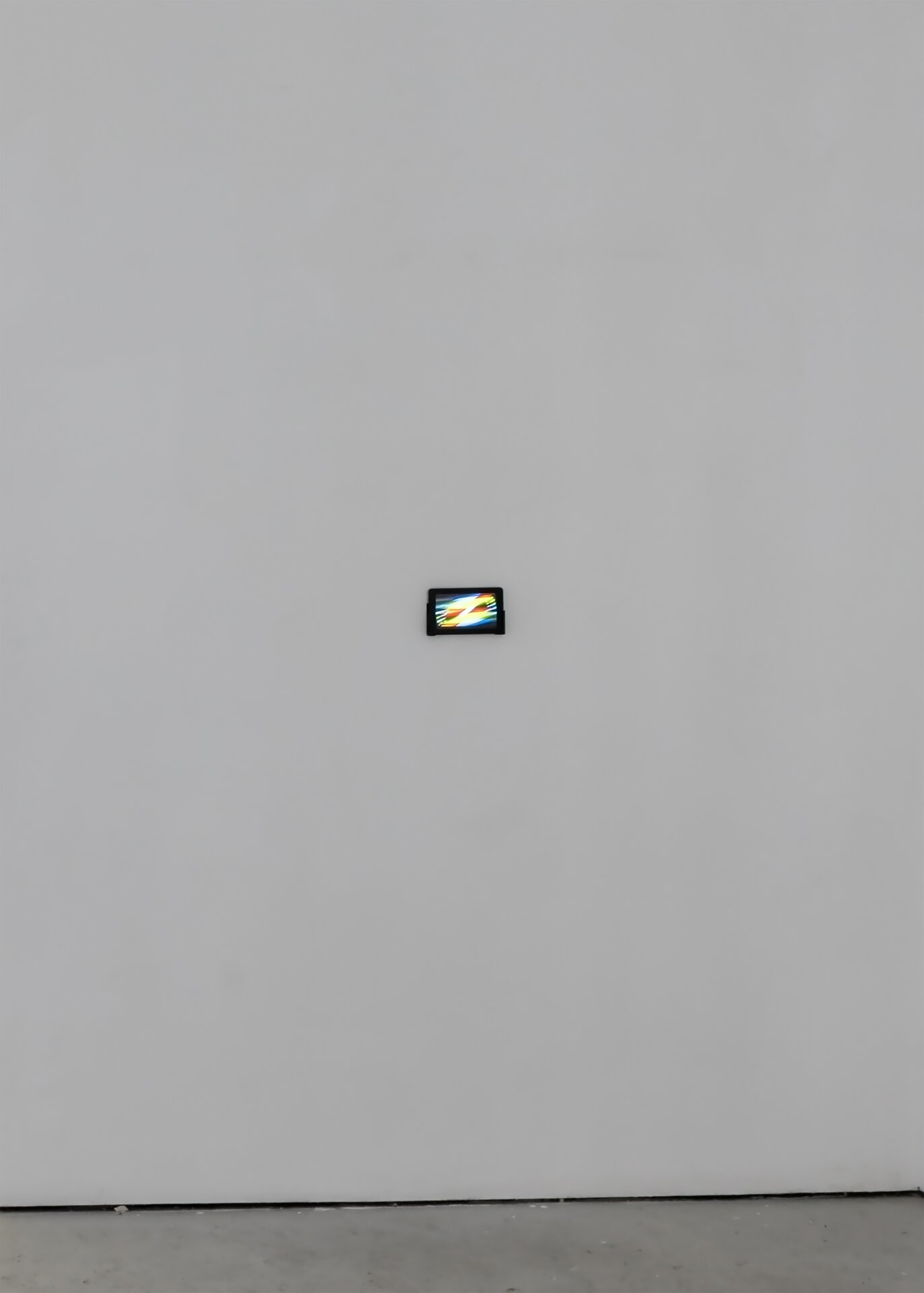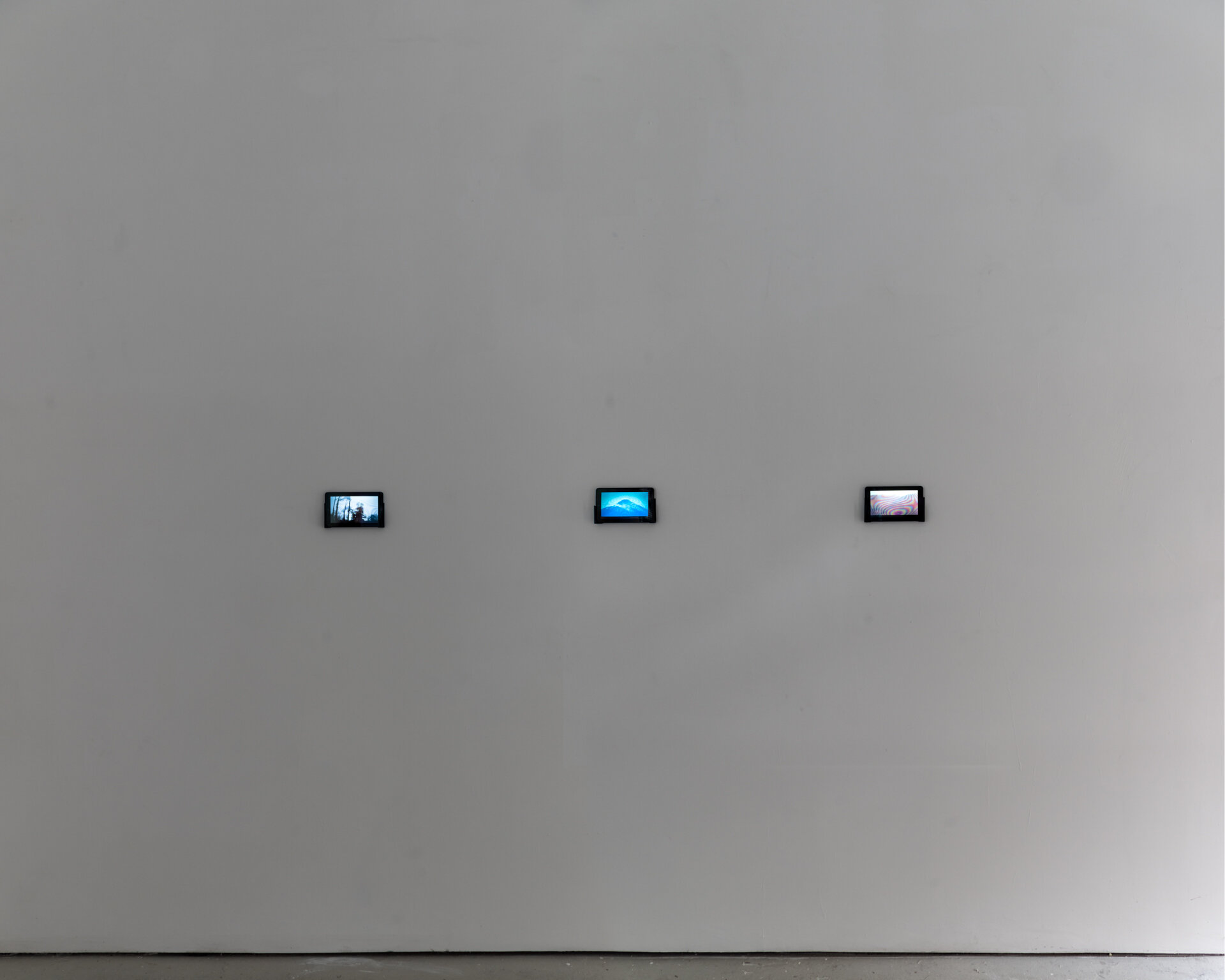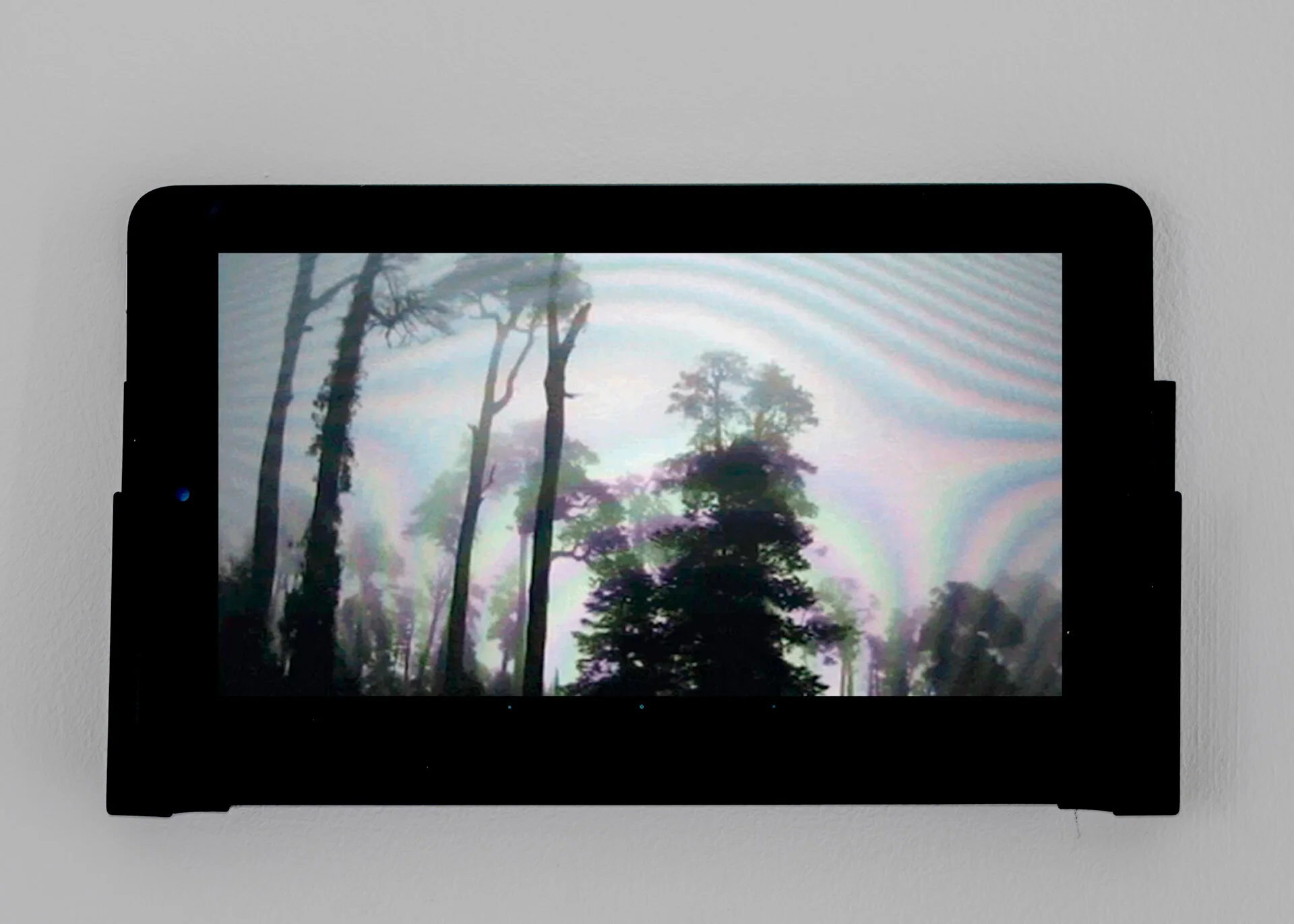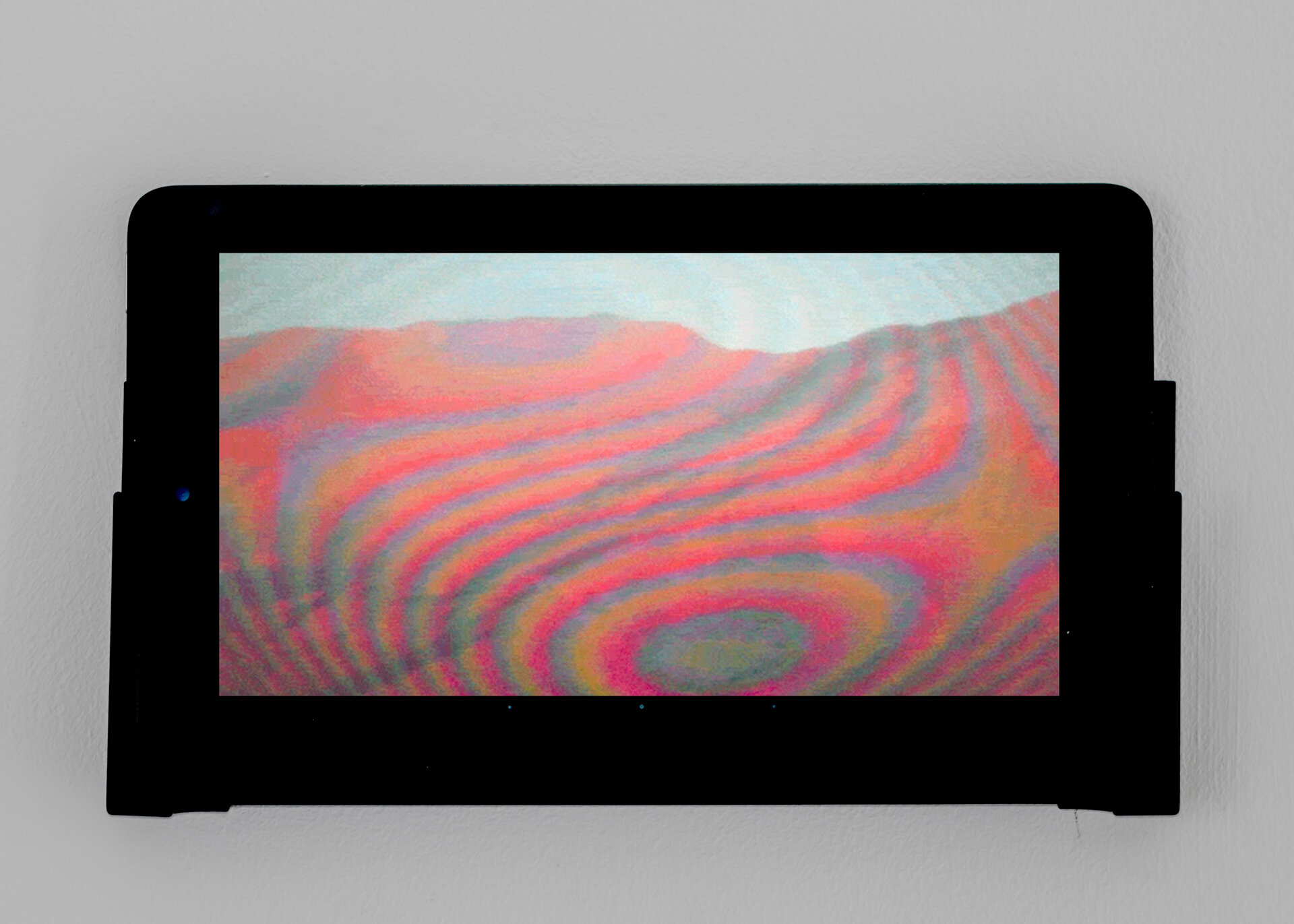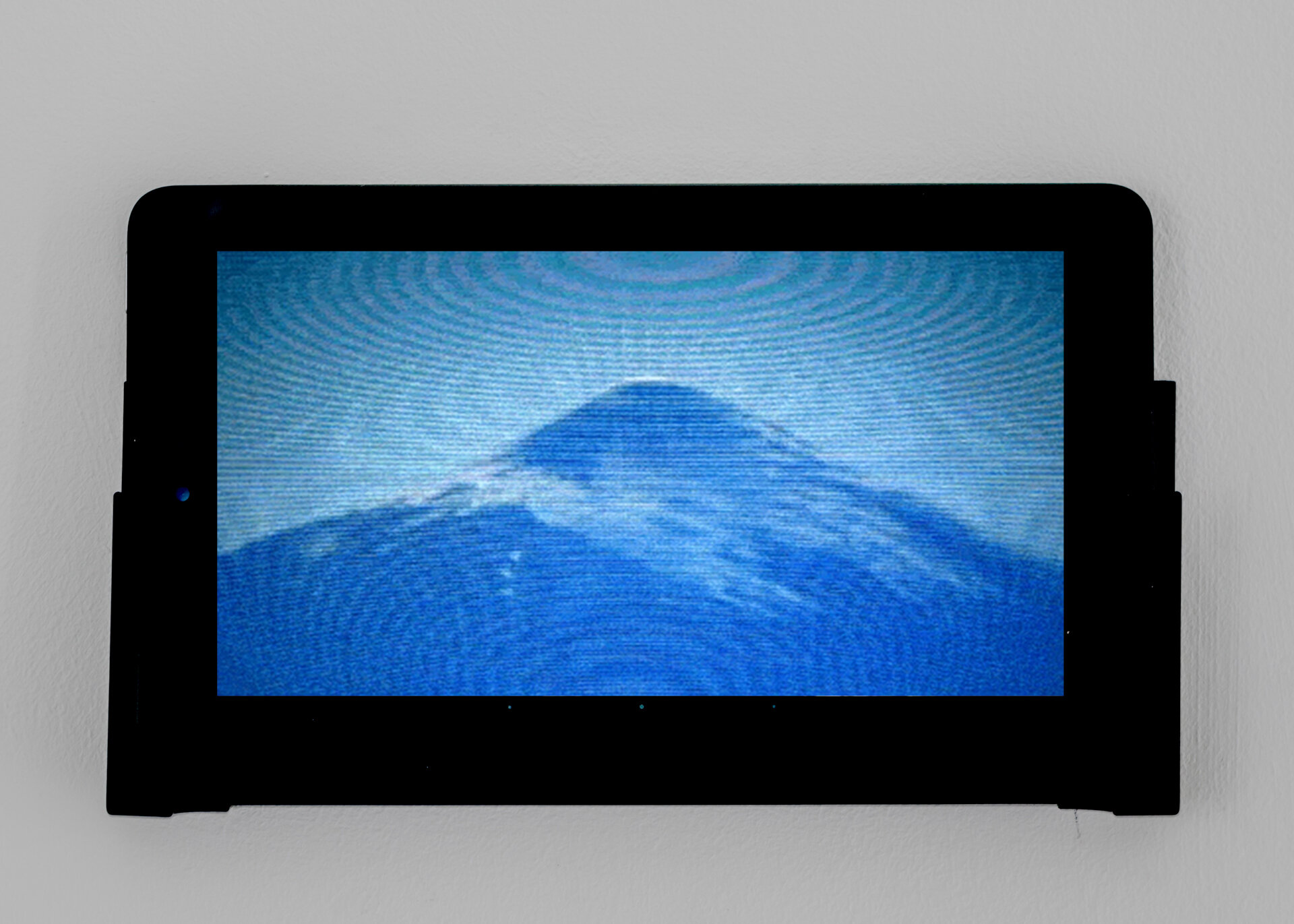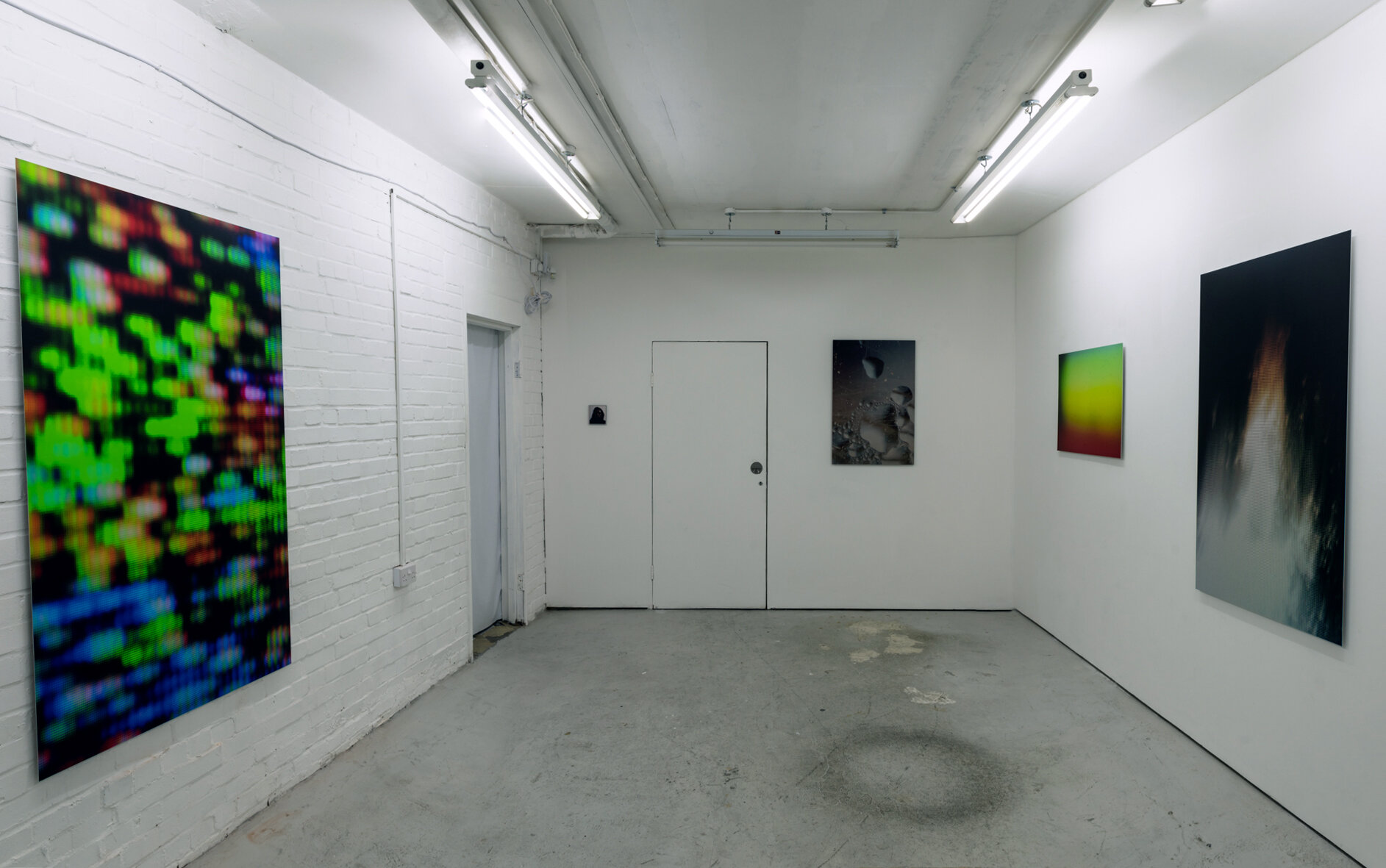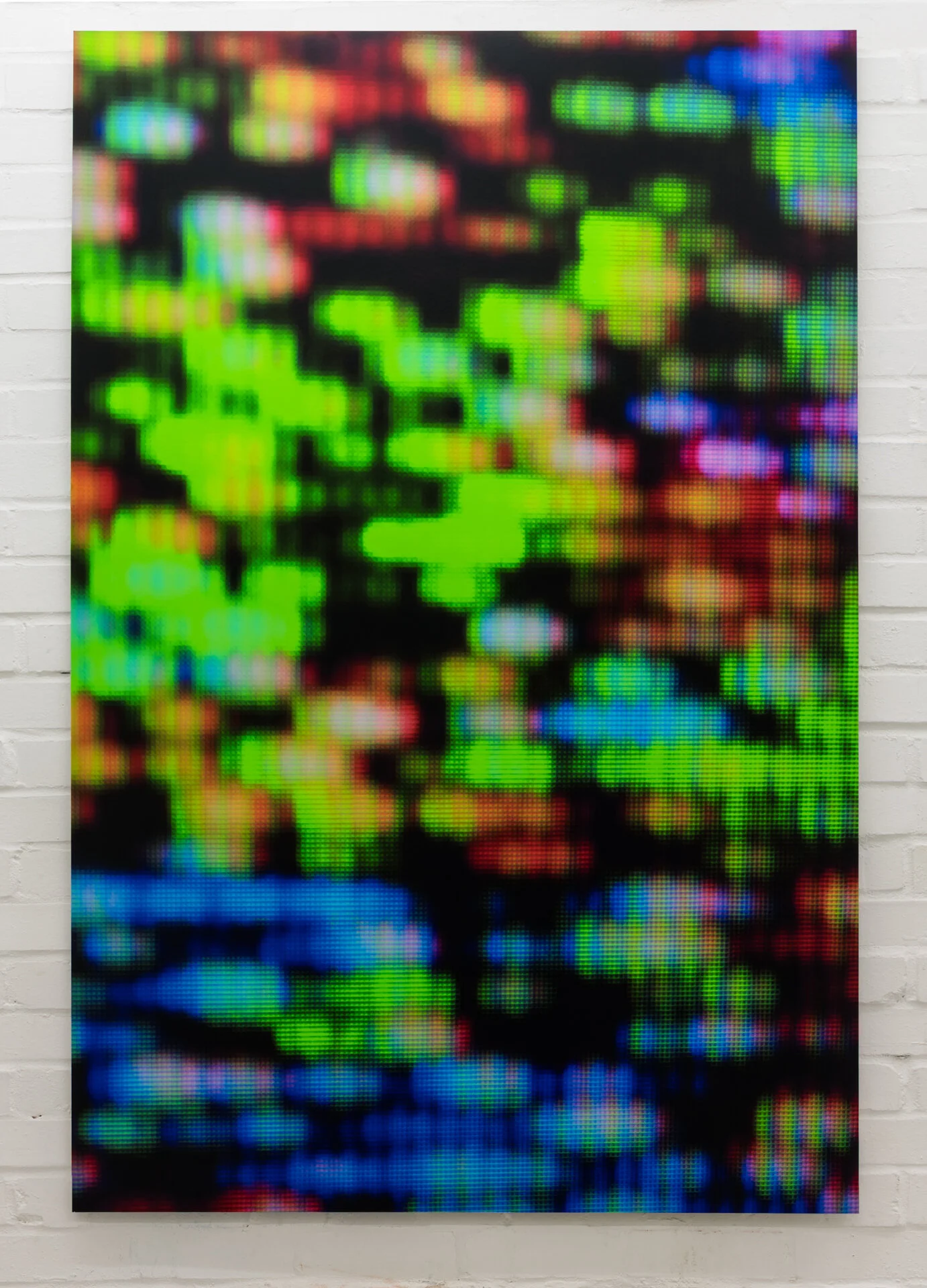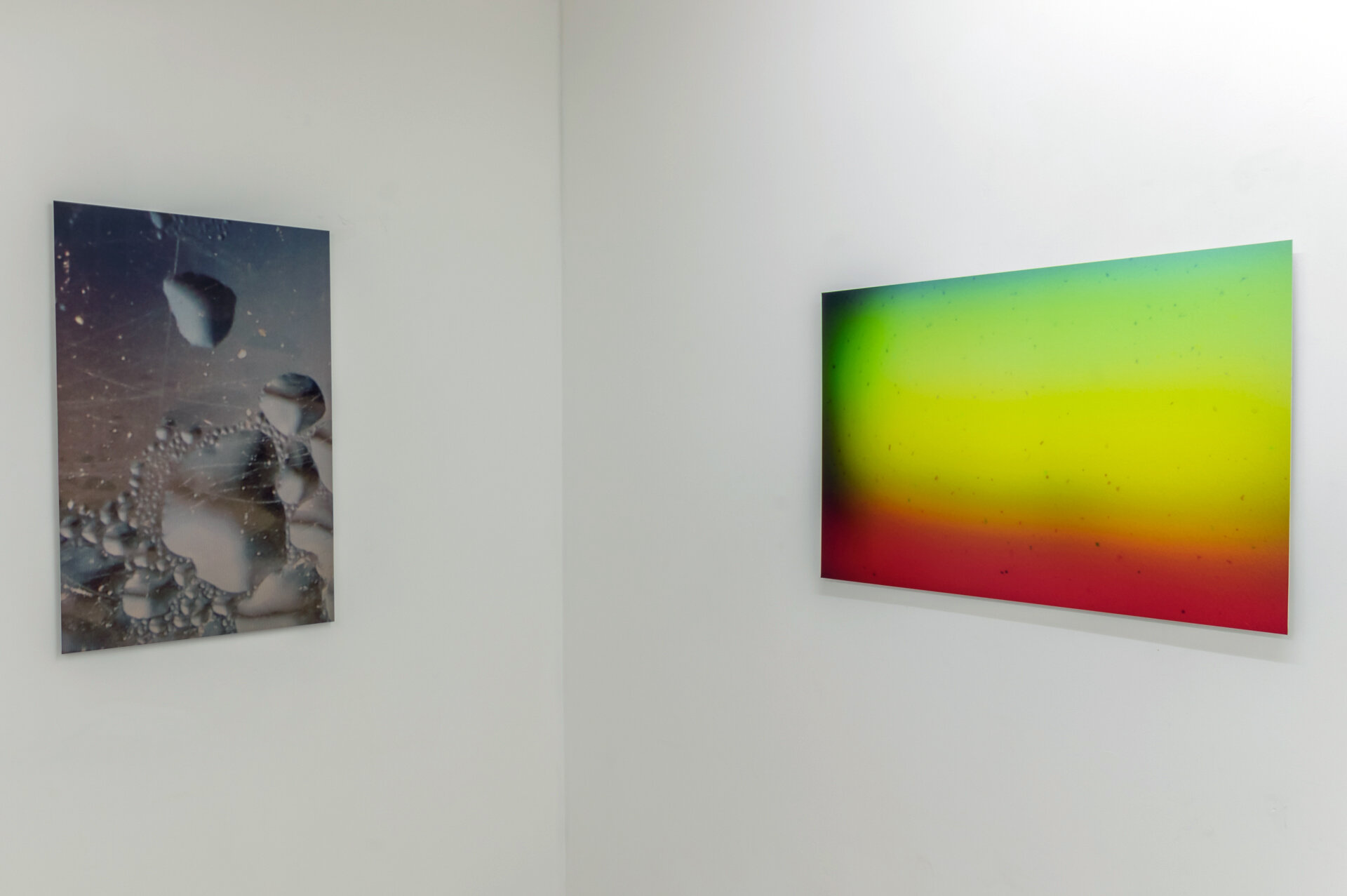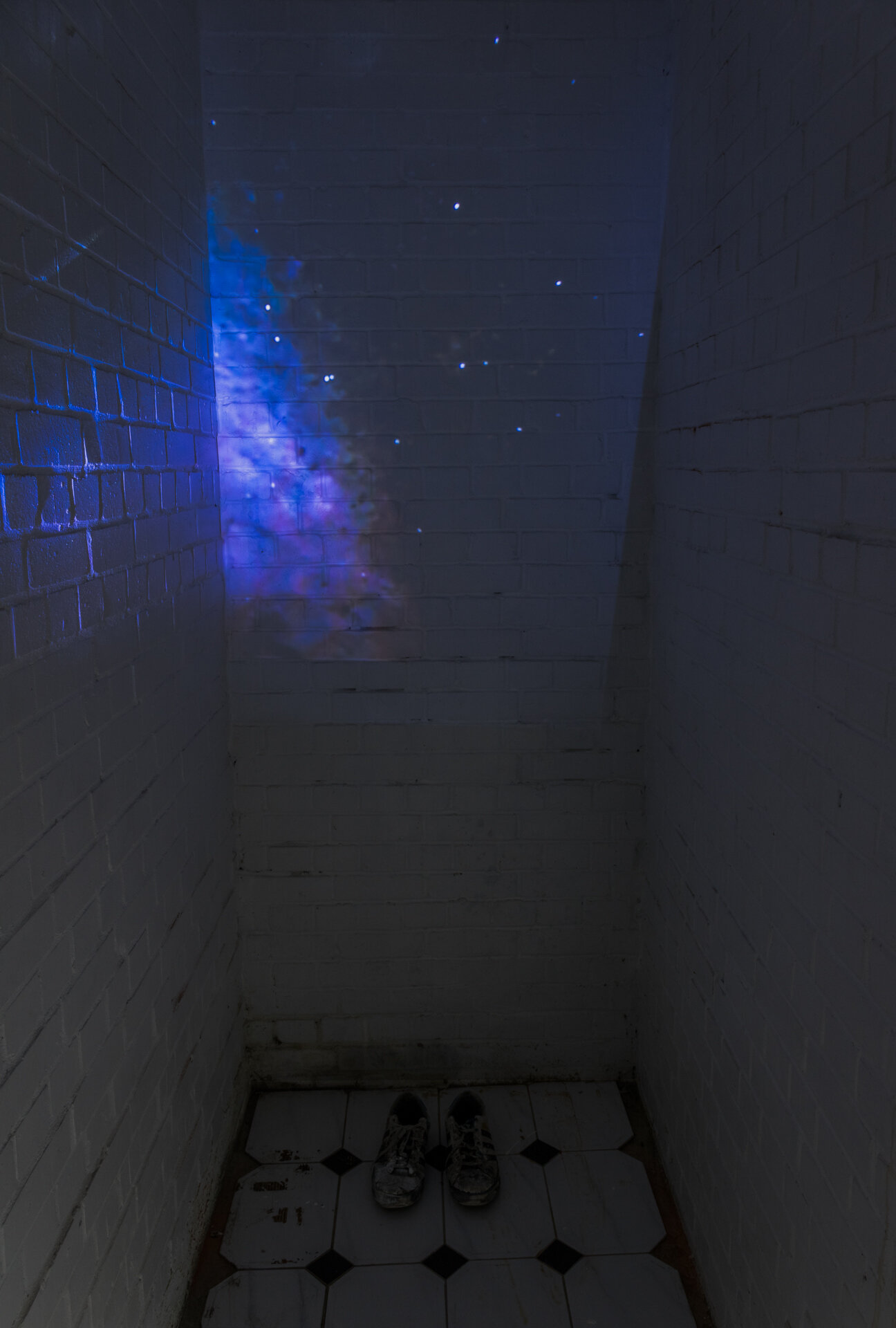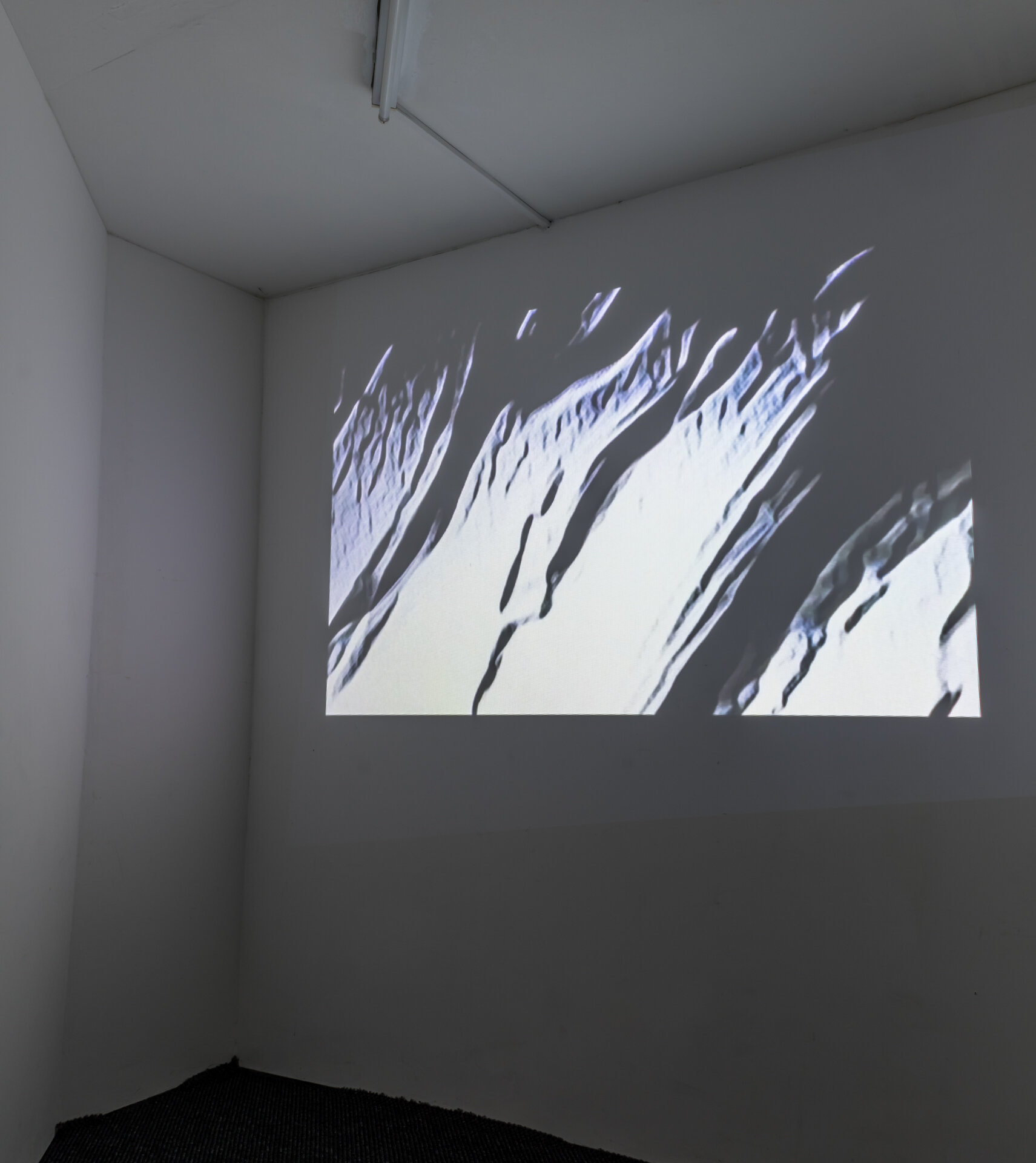BAD GATEWAY : YAMAMOTO KEIKO ROCHAIX
FROM THE EXHIBITION TEXT BY YAMAMOTO KEIKO ROCHAIX:
The unabashed still and moving images of Molina are powerful reminders of what you think you are seeing is not what they really are. Reminders, because in the Internet age of the early twenty-first Century when synthetic images are omnipresent, it is considered that we have a basic understanding of what we see is not what they are. Nevertheless, images pushed to the limit of reality, either by way of blown up to maximum to the extent where objects are no longer recognisable, or through video feedback where projector is projecting its own image while analogue and digital change hands in infinite loop, a feigned appearance at the first glance will at one point leave room to an awareness that all is in fact quasi-fantasy and one is handed a total liberty to see what they wish to see.
Concerned with the relationship between natural or analogue and digital phenomena, Molina effectively searches to alter the perception through abstraction. Video piece “As Above…” is a case in point. Taking a cue from a serendipity of situations, the artist shot the image of an analogue monitor with a digital camera and projected it back onto the analogue monitor, in the process catching rudimental geometric shapes dancing and swirling in the dark. These images have almost the quality of monochrome jewellery or jellyfish leisurely swimming in deep dark ocean, making one suspect that it may be a digitally produced image; they are indeed synthesised image after ping-pong of digital-analogue processing but in its source, they are simply the reflections and shadows of objects.
Molina’s images are very private. They are demanding in that they ask audience for time to experience them and internalise them. They do not represent anything that is tangible and has physicality. There is no reference, one is asked to ‘feel’ it. The Canadian artist refers to William Burroughs who in turn quotes John Wheeler, a particle physicist, who said that “nothing exists until it is observed.” Once interiorised, the abstract images of Molina start to grow strangely organic; they have the drive not only to speak to one’s sense of visual, but also to that of touch, and of hearing. It is a highly individual, private experience, as in the words of the artist, almost as in “altered states of consciousness or hallucinations.”
“Bad Gateway” refers to increasingly large amount of time the artist, and people at large, spend in front of screen and keep receiving the code letting know that something has gone wrong. In the context of his first solo show in the UK, however, we can safely say that Molina himself acts as a gateway for audience to peek into and live the seemingly nonchalant but potentially deep and intricate web of visual and total experience.

